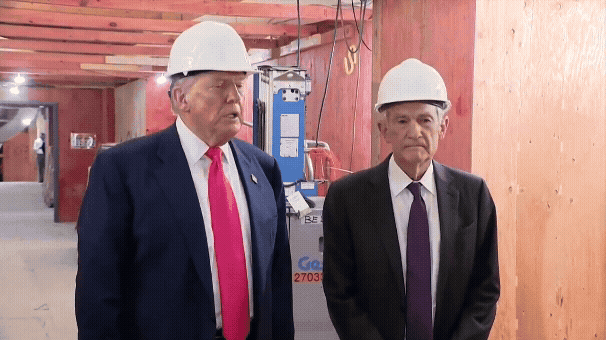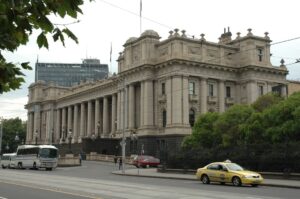
UPDATE: Tensions escalated today as Donald Trump confronted Jerome Powell at the under-construction Federal Reserve building in Washington DC, intensifying their ongoing feud over rising project costs and interest rates. The heated exchange unfolded in front of the media, highlighting the deepening discord between the President and the Federal Reserve Chairman.
During a visit to the building site earlier today, Trump presented Powell with alarming new figures, claiming the total construction costs have surged to $3.1 billion, a significant increase from an earlier estimate of $2.7 billion. “It’s went up a little bit, or a lot,” Trump stated, as Powell shook his head in disbelief.
The confrontation marks a critical moment in their months-long battle, where Trump has pressured Powell to lower interest rates to stimulate the economy. Powell has resisted these calls, emphasizing a careful approach amid ongoing economic disruptions caused by Trump’s new tariffs.
“I’d like to see it get finished. In many ways, it’s too bad it started, but it did start and it’s been under construction for a long time,” Trump remarked, expressing frustration over both the project delays and its escalating costs.
Accompanied by Republican Senator Tim Scott, chair of the Senate Banking Committee, Trump aimed to address the alleged overruns directly. Scott noted, “One of the reasons we wanted to see it was the overruns of the expenses. We wanted to figure out why.”
As the two men exchanged barbs, Powell quickly debunked Trump’s claims regarding the costs, stating, “You’re including the Martin renovation. You just added in a third building.” Trump dismissed Powell’s clarification, insisting that the new figure was legitimate.
Powell remained firm, responding, “No, it (the Martin renovation) was built five years ago. We finished Martin five years ago.” The exchange highlighted the complex dynamics of the Federal Reserve’s independence from presidential influence, a principle enshrined in the Federal Reserve Act of 1913.
Despite the clear tensions, Powell assured that the Fed does not anticipate any further cost overruns but is prepared to handle any unexpected expenses. “We have a little bit of a reserve that we may use. But, no,” he confirmed.
The clash not only underscores the strained relationship between the President and the Fed but also reflects broader concerns about economic management ahead of pivotal decisions that could impact millions of Americans. Trump’s repeated public pressure on Powell raises questions about the independence of the Federal Reserve and its ability to operate free from political interference.
As this story develops, the implications of this confrontation could resonate through the financial markets and influence future monetary policy decisions. Observers are keenly watching to see if Trump’s aggressive stance will compel Powell to adjust his strategies, or if the Fed will continue to uphold its independence in the face of mounting pressure.
Stay tuned for further updates on this developing story, as the impact of their feud unfolds in real-time on the economic landscape.






